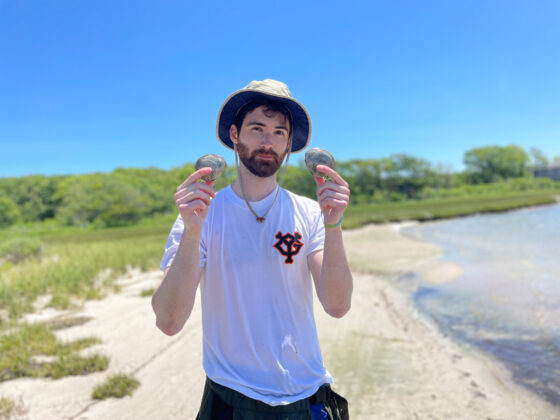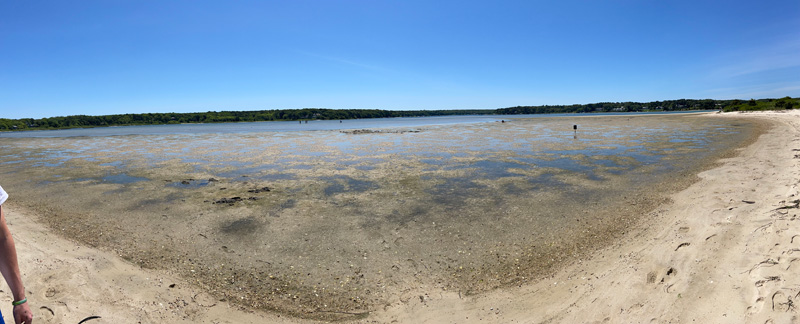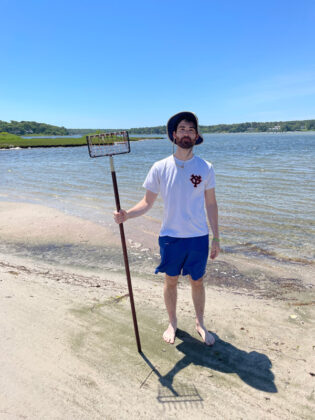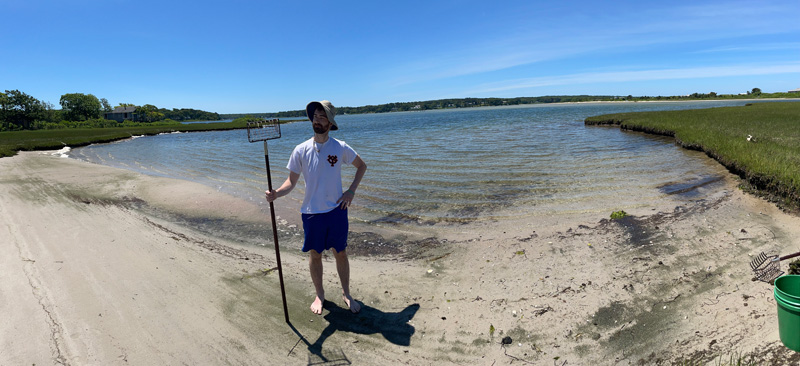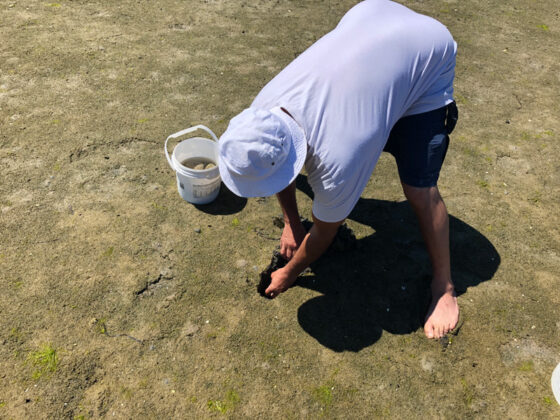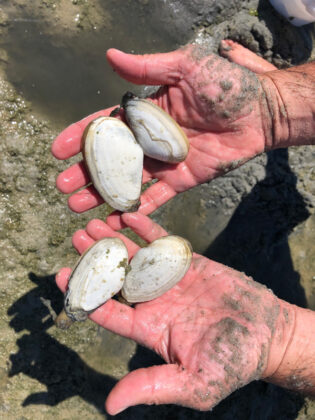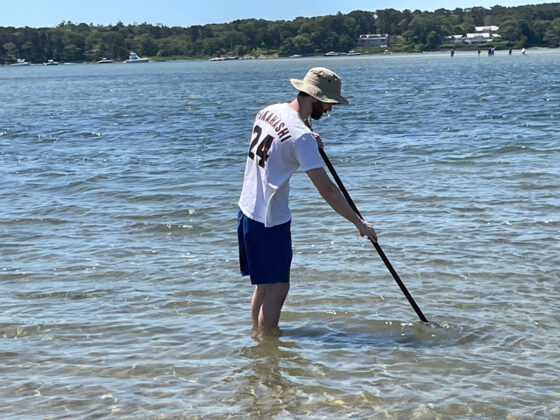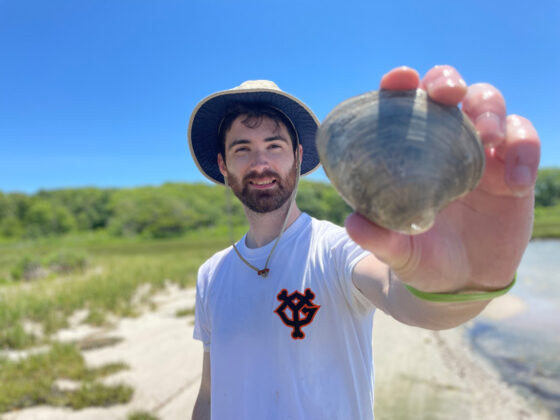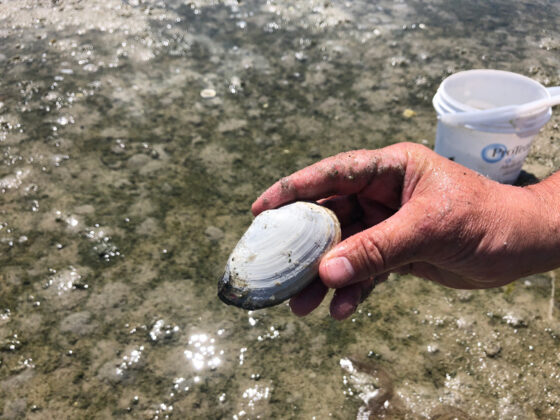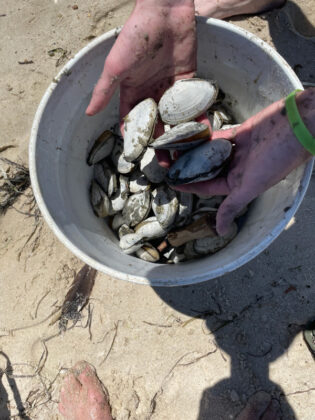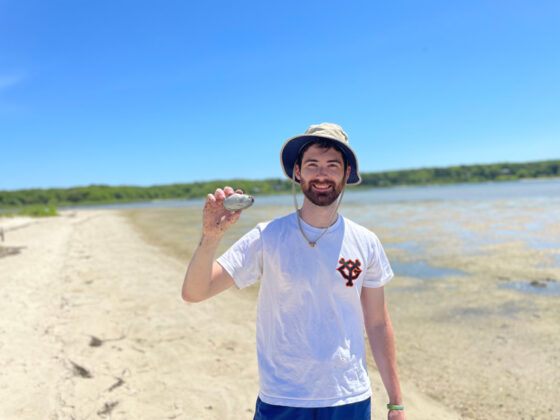One of the best things about living on the Island is you can live just about every which way there is. Want that suburban, nuclear family lifestyle? Done. Work on a humble farm and sell your wares at the farmers market? Of course, just buy a pair of Blundstones first. How about the luxurious, bourgeoisie beachfront, pay-someone-to-check-the-thermostat-of-your-summer-villa-in-the-winter-months kind of rich way of life? Absolutely — well, that one’s a little harder to obtain.
My favorite choice, however, is that if you really put your mind to it and sprinkle in a little gumption, you can basically live off the bounty of the land as a hermit.
I was thinking about all this as I was out on the mudflats with my colleague and friend Dave Plath, The Times’ designer/production manager extraordinaire.
The first — and most important — step for those interested in clamming is to get a shellfish permit from the town in which you will be harvesting. Each town is a bit different, but head to their websites and find the shellfish permit page. Dave and I happened to be in Tisbury, so I went down to the natural resources building at the bottom of Owen Park and picked up a weeklong nonresident permit for $25. Tisbury also offers $75 for a month and $400 for an annual. Tisbury residents can get a permit for $40, and Tisbury seniors only have to pay $5.
Along with getting a permit, make sure to learn where you can and where you can’t go harvesting shellfish. There’s quite a few rules and regulations in place to keep shellfishing sustainable and enjoyable for everyone. So don’t be the dummy that ruins it for everyone else.
Fully legal, geared up, and educated, I met up with clam master Dave on a sunny Friday and headed out to Tashmoo.
In terms of gear, clamming is pretty easy. Dave brought plastic buckets, gloves, waders, hand shovels, and water shoes, but all we ended up using were the buckets.
“Great day at the office,” Dave said as we splashed out onto the mud.
Dave has been clamming since he was a kid. He would come to the Vineyard with his family, and fell in love with being out on the water finding food.
Once out on the mud flats, all one needs to do is look down for little holes in the mud and start digging. For a beginner, I went slow as I dug, making sure I didn’t break any clams or slice my hand open. The soft-shell clams, or steamers, will sometimes be close to the surface, or deep down, but you just keep digging until you feel the top of the clam, then dig around it and pull it out.
And that’s all there was to it. Pretty simple way to get some fresh sea-to-table food.
Tashmoo was a great place to go because we harvested about half a bushel in little more than an hour. Dave was a lot faster than I was, so he collected the majority of our clams, but in his words, I didn’t do “too bad.”
Dave and I then waded out into higher water, and used hand rakes to dig up some hard-shell clams, known as quahogs, as well. This took a bit more effort, but was just as fun.
After our harvesting work we headed back to The Times office to share our bounty with some of our staff.
While I loved my day in the sun — digging up my dinner with my bare hands — I’m not ready to give up my social life quite yet, but once I’m older and my beard grows long and silver, it’ll be the hermit life for me.


